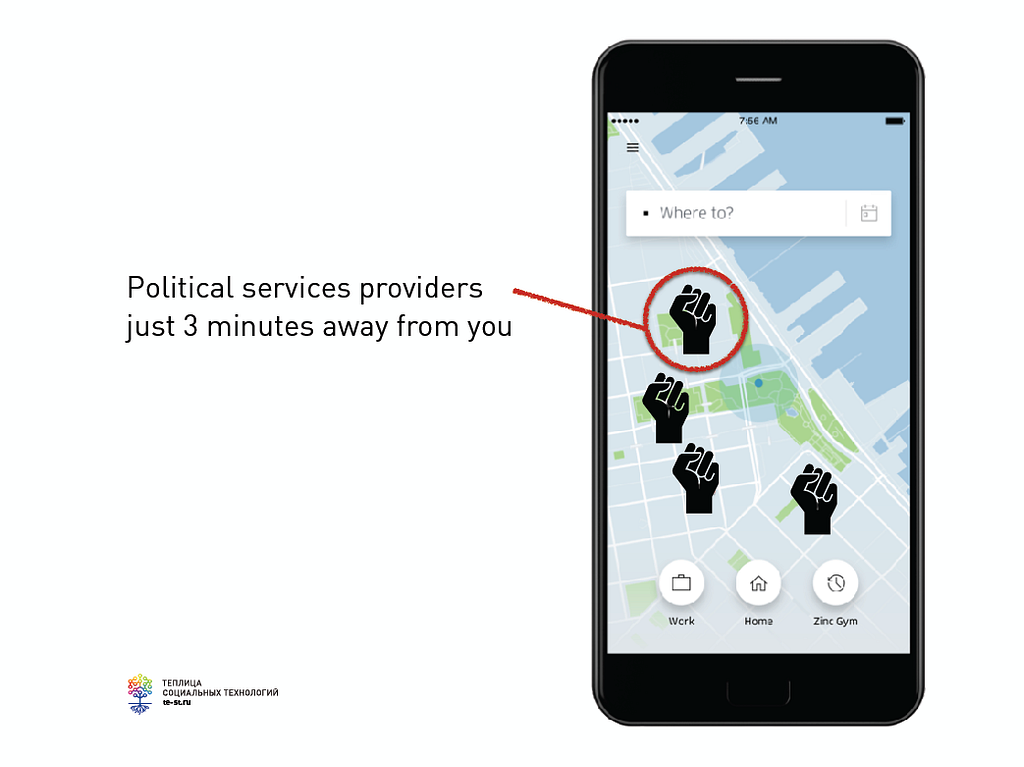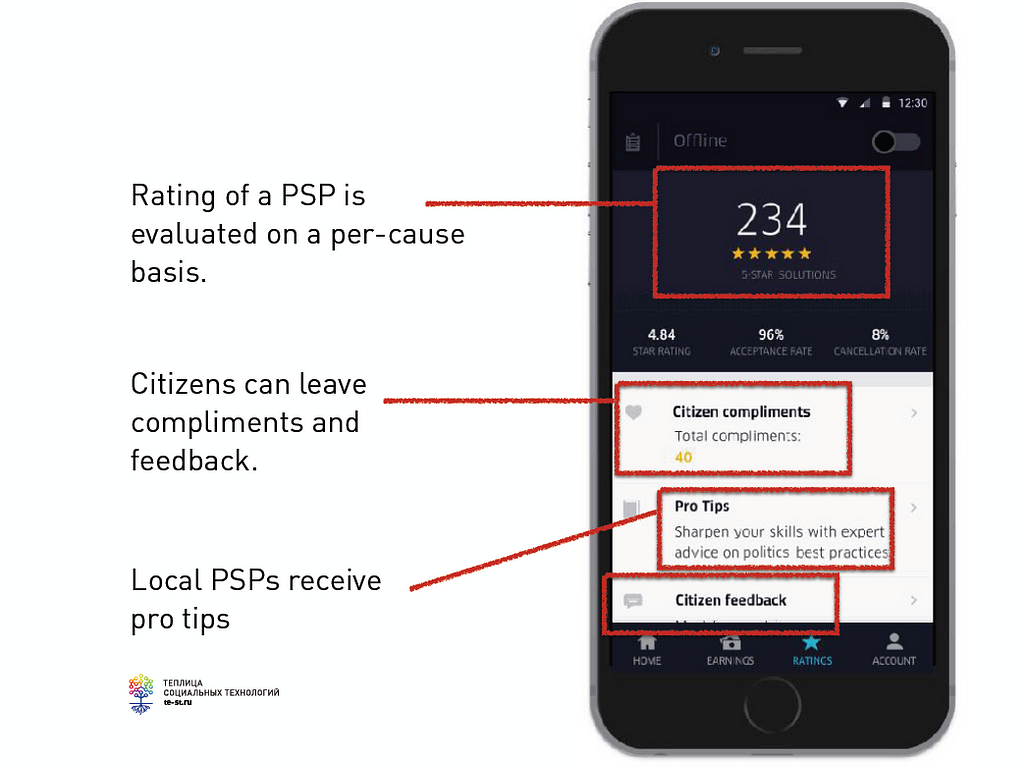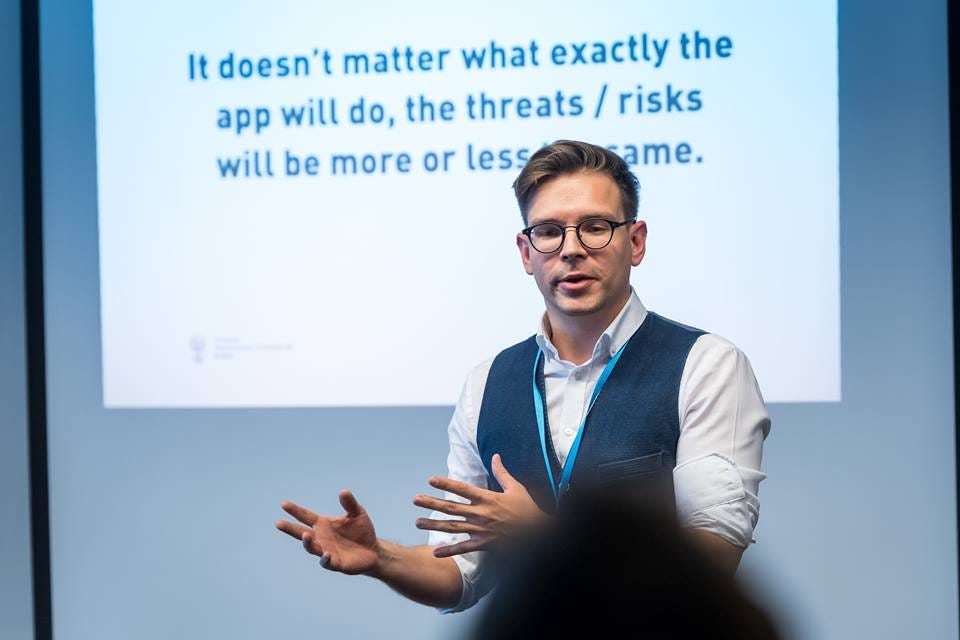32 Reasons an Uber for Democracy will fail

The 6th edition of Personal Democracy Forum Central and Eastern Europe (PDF CEE) in Gdańsk, the international conference convening civic tech activists from around the region, was focused on the theme of a Future for All.
At the conference, Doteveryone’s Head of Networks and Engagement, Stav Bar-Shany, attended a workshop hosted by Alexey Sidorenko, Director of Teplitsa: Technologies for Social Good, on the dangers of the platformization of democratic processes. In the workshop, Alexey asked participants to write down as many possible reasons for the failure of an imaginary app dubbed the ‘Uber for Democracy’ they could think of.
This is an interesting way of contemplating the viability of a new tech product or service. Rather than looking through the more traditional economic lens and asking questions such as: What’s the demand? Is there a gap in the market? What is the viability of the business model? It instead uses the lens we champion at Doteveryone, one that considers whether the technology is responsible.
As we are seeing more and more tech products and services that are shaping our society in profound ways and having unintended consequences, it is important that we try to consider and anticipate them even before we start to create and develop the product. We won’t be able to capture them all but it is important that we try.
In this guest post Alexey outlines the results of the workshop in which participants, in just 10 minutes, found 32 ways in which an Uber for Democracy could fail.
Using commercial services have never been as easy as it is today: ordering a taxi, booking a hotel or a flight, going on a date, are increasingly made more accessible thanks to their platformisation and applification.
But what about democracy and the services of our governments? It is only a matter of time before they are platformitized too?
Using the trias politica model for the governance of a state, which typically divides its checks and balances into three branches of responsibility: executive, judicial and legislative, let’s first consider the possibility of a digital future for democracy.
Under the executive branch, which is responsible for the governance of a state, is unlikely to need platformization, since its main function (to execute and enforce the rules) might well be left to artificial intelligence. Secondly, the judicial branch, which not only includes the laws but also the code and architecture, most likely won’t be platformized either due to complexity. Following Lessig’s ‘code as law’ concept, the online laws will not only be affected by physical infrastructure but also by coding standards, biases, market forces, etc.
“We could well have an Uber for Democracy”
But under the legislative branch is where we may well have the potential for platformisation. We could well have an Uber for Democracy whereby citizens (or the rider/customer) can request political solutions from the political service providers, or PSPs, which include movements, parties, individual politicians, labor unions, lobby firms, etc. (or the driver/producer). Citizens pay with political points or money (maybe bitcoins) and political service providers provide solutions.

The final functionality can vary, but, in the long run, it will succeed over the current traditional political system if it can achieve the following three elements of platform success:
- Connection: it will be much easier for citizens and PSPs to plug into the platform to share and transact
- Gravity: the platform will prove its efficiency in attracting participants, both citizens and PSPs, en masse
- Flow: the platform will foster much more frictionless exchange and co-creation of value. Given the previous experience with sharing economy platforms, the probability of existence of such platform is more than zero.
At this stage, it doesn’t matter what exactly the ‘Uber for Democracy’ app will look like and the exact functions it performs. For whatever is built, the threats/risks will be more or less the same.
What is crucial now, pre-development of such a system or app, is to consider how we design it to be efficient, flexible, citizen-friendly, fair, and non-discriminatory. That’s to ensure that an Uber for Democracy is very much that — democratic.

So participants of PDF CEE’s ‘Designing Uber for Democracy’ workshop addressed this challenge in a truly CEE way: creative negative thinking.
In a ‘pre-mortem’ exercise, participants are asked imagine the failure of a project in the future and explain its possible reasons. In this instance, the project was the ‘Uber for Democracy’.
In the workshop, a group of designers, systems architects, democracy thinkers and practitioners were divided into three groups. Each group through a different lens of responsibility — ‘transparency and accountability’, ‘fairness’ or ‘inclusivity’ — explored what could go wrong with an ‘Uber for Democracy.’
Here are the results from 10 minutes of complementation of the questions from the group about how the platform would fail:
How an ‘Uber for Democracy’ fails at being accountable and transparent:
- User validation I — It fails because it cannot manage user validation — there are too many fake profiles affecting the outcomes.
- User validation II — in the offline space the users are organized and corrupted in order to influence the outcomes of the activity on the platform.
- Black Box I — the platform works as a black box and there’s no way to check how it works and know how the decisions are made.
- Black Box II — the platform is too complex to comprehend and even though it’s open source and well documented, it’s still a de-facto black box for less educated citizens.
- Business model I — the platform’s business model is ad-oriented (‘Facebook model’) and uses the data about the users (both citizens and PSPs) for manipulation and self-interest.
- Business model II — the platform fails because it cannot find sources to finance it.
- Business model III — the initial funders of the platform get into a severe conflict of interest.
- Business model IIII — the business model of the platform simply doesn’t allow for sustainable development.
- Path dependency — the platform’s global reach is paralyzed by jurisdiction and other legal debates.
- Digital security I — a nation-state actor hacks the platform, leading to huge disruption both in online and offline spaces (yes, the participants, named the country — Russia ;))
- Digital Security II — users data is stolen by hackers
- Accountability I — there’s no accountability because there’s no human being at the end of the line.
- Accountability II — the platform fails to establish accountability lines (who’s accountable to who), creating massive confusion.
- Feedback Loops — even though the platform allows for feedback loops between citizens and PSPs, the platform doesn’t create proper mechanisms to create a mutual feedback loop between itself and the users.
How an ‘Uber for Democracy’ fails at being fair:
- Financial inequality — the platform includes paid premium functions. This excludes parts of the population. Richer people got more access =the issues of the most powerful continue to get the most attention.
- Knowledge inequality — early adopters shape the use of the app: they are the most tech savvy, richer and more privileged. Inequality is embedded from the very creation of the platform and grows through every moment of it.
- Simplicity challenge — constrained by the architecture of the app, complex issues are ignored (or oversimplified), and only short cycles receive response. This rewards systematic populism.
- Lack of ethics I — the app doesn’t have ethical concerns around the nature of the requests.
- Over-individualization — the platform doesn’t allow for collective action on issues that affect many. The ‘one device — one person’ architecture atomises society and makes it more prone to authoritarian takeover.
- Social status — the feedback mechanism leads to the creation of a system for evaluating citizens making citizens reticent to raise issues for the fear of consequences.
- Malicious activity I –users exploit the platform to start fights or report neighbors for petty reasons.
- Malicious activity II — hatred groups use the platform to attack minority groups.
- Majority rule I — issues that don’t concern majority (or are unlikely to pass) are not taken into account.
- Majority rule II — the system rewards popular issues and penalizes less popular issues (that don’t create much traffic), which leads to a biased system of debates.
- Singularity challenge — the algorithms become so advanced that have the ability to introduce their own agenda
How an ‘Uber for Democracy’ fails at being inclusive:
- Monoculture bias I — platform design illicitly excludes minorities, communities, historically disadvantaged groups (women, people of color)
- Language barrier — even though the platform positions itself as global, it fails on very basic levels of providing good translation.
- Narrative barrier — the platform doesn’t take into account different ways that people see what democracy is. It has a ‘one-fits-all’ formula for a democratic process that rewards some societies, while robbing others.
- Technology barrier I — not everyone has access to technology, computer or a smartphone. An old browser becomes a significant limiting factor to democracy, too.
- Technology barrier II — people with bad technology skills are manipulated and excluded.
- Physical barrier — disabled people are unable to use it (especially, the blind)

Alexey Sidorenko is Director of “Teplitsa: Technologies for Social Good”, a project to help Russian NGOs with IT and innovative forms of civic engagement. Alexey leads a collective of more than 20 individuals in various regions of Russia who spread knowledge about new tools for civil society organisations and social entrepreneurs. Throughout his career, Alexey has collaborated with various civic groups, think tanks, and international communities, including Carnegie Moscow Centre, Global Voices Online, Freedom House, and Reporters Without Borders. In 2010, he developed the “Help Map” project, an award-winning crowdsourcing initiative to help the victims of summer wildfires.
32 Reasons an Uber for Democracy will fail was originally published in Doteveryone on Medium, where people are continuing the conversation by highlighting and responding to this story.